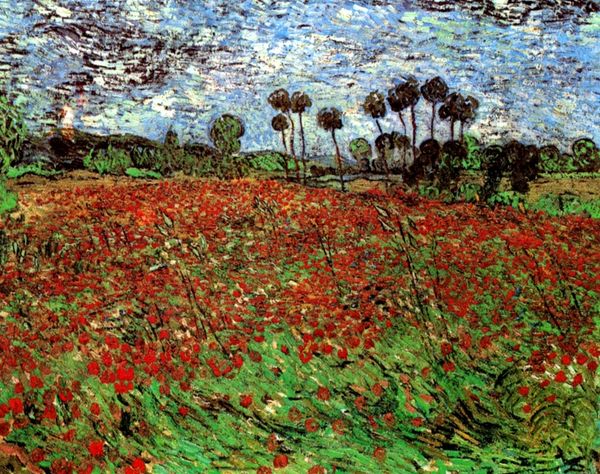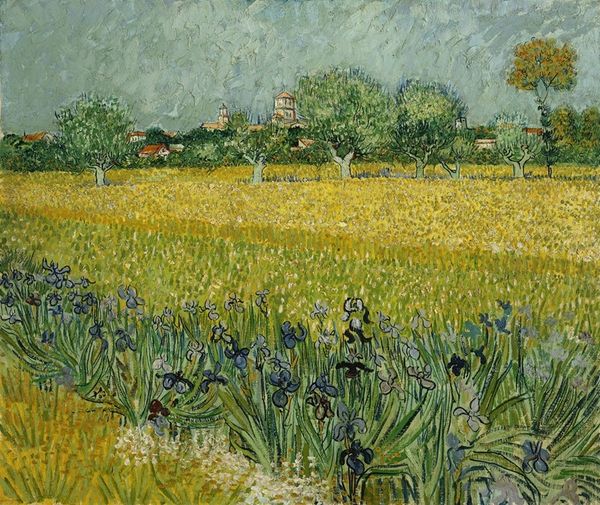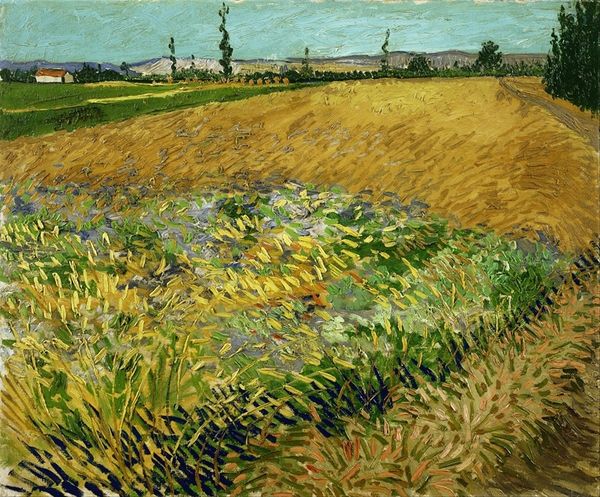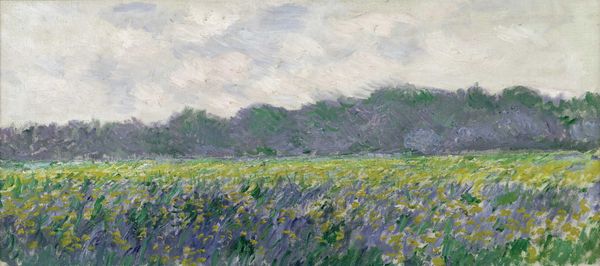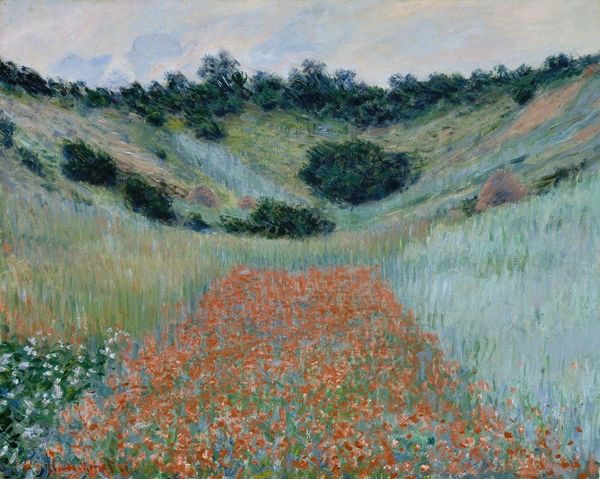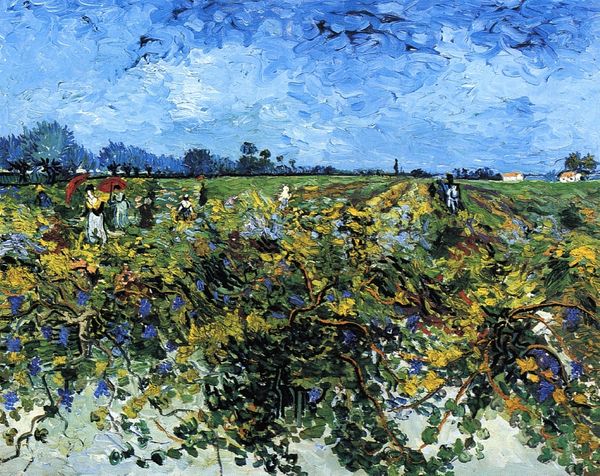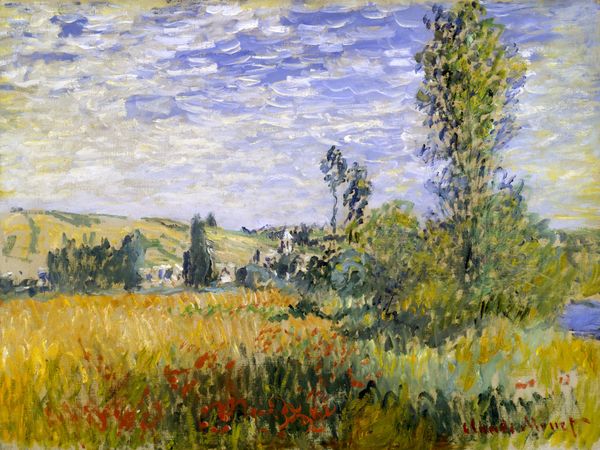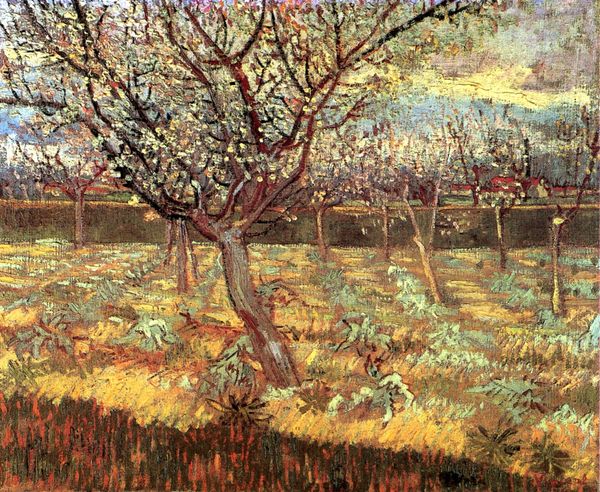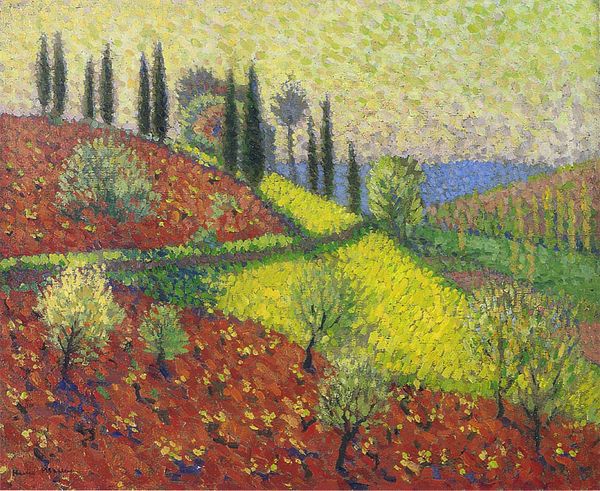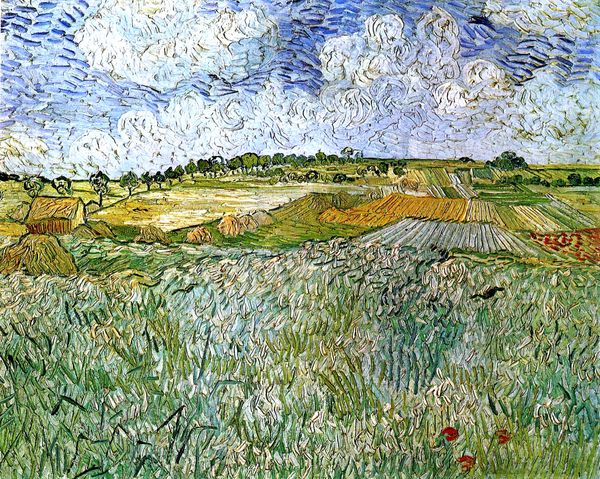
painting, plein-air, oil-paint
#
narrative-art
#
painting
#
impressionism
#
plein-air
#
oil-paint
#
landscape
#
impressionist landscape
#
expressionism
#
post-impressionism
#
expressionist
Copyright: Public Domain: Artvee
Editor: Here we have "Poppy Field," an oil painting by Vincent van Gogh. I’m immediately struck by how tactile it feels; you can almost feel the thick paint strokes and imagine the physical act of creating this vibrant landscape. What are your thoughts? Curator: It's interesting you pick up on the tactile quality. For me, the materiality is key. Look at how the loaded brushstrokes create texture, almost sculptural. This wasn't just about representing a poppy field; it was about the very *process* of making, about transforming oil paint into something evocative. How do the repetitive, almost obsessive, marks speak to you in relation to van Gogh's labor and the conditions under which he produced this work? Editor: That's fascinating. I hadn’t considered the labor aspect so directly, but now that you mention it, the repetitive strokes do suggest a kind of intense, perhaps even arduous, effort. Could that speak to his mental state at the time? Curator: Precisely! And consider the socio-economic context: the accessibility of materials, the rise of the art market… How did those forces shape not just *what* he painted, but *how* he painted it? The value, too, assigned to 'high art' like painting, versus, say, more humble forms of manual labour in the fields depicted. Are those hierarchies reinforced or challenged here through his treatment of the medium? Editor: That really reframes my understanding. I was initially focused on the beauty of the scene, but now I'm seeing the layers of meaning embedded in the very way the paint is applied. Curator: Exactly. Seeing beyond the surface is key. The material conditions of production, even down to the cost of oil paint, influenced this landscape, and to ignore that is to miss a critical part of the artwork's story. Editor: I'll definitely be paying more attention to that in the future. Thank you!
Comments
No comments
Be the first to comment and join the conversation on the ultimate creative platform.
